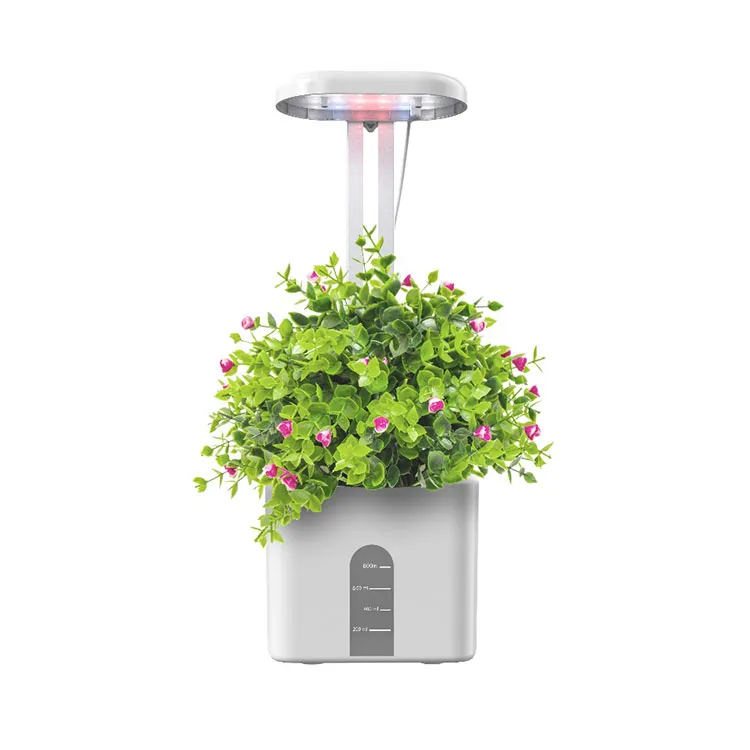The Science Behind LED Grow Lights: Revolutionizing Indoor Gardening
2024-07-27
Introduction
Indoor gardening has gained immense popularity in recent years, driven by advancements in technology that make it easier and more efficient. Among these innovations, LED grow lights stand out as a game-changer. In this blog, we'll delve into the science behind LED grow lights and how they are revolutionizing indoor gardening.
Understanding LED Grow Lights
1. What Are LED Grow Lights?
LED (Light Emitting Diode) grow lights are specialized lighting systems designed to provide the optimal light spectrum for plant growth. Unlike traditional lighting systems, LEDs can be tuned to emit specific wavelengths of light, which are crucial for photosynthesis and plant development.
2. The Importance of Light Spectrum
Plants rely on different wavelengths of light for various growth stages. The primary wavelengths used in photosynthesis are blue (400-500 nm) and red (600-700 nm). LED grow lights can be customized to provide these specific wavelengths, ensuring that plants receive the exact light they need at different stages of their growth cycle.

Advantages of LED Grow Lights
1. Energy Efficiency
LED grow lights are highly energy-efficient compared to traditional lighting options like fluorescent and HID (High-Intensity Discharge) lights. They consume less electricity, produce less heat, and have a longer lifespan, making them a cost-effective choice for indoor gardening.
2. Heat Management
One of the significant advantages of LED grow lights is their low heat output. Excessive heat can damage plants and increase the need for additional cooling systems. LED grow lights generate minimal heat, reducing the risk of plant stress and the need for complex cooling solutions.
3. Customizable Light Spectrum
LED grow lights can be fine-tuned to emit specific wavelengths of light, allowing gardeners to optimize the light spectrum for different plant species and growth stages. This customization enhances photosynthesis, leading to healthier plants and higher yields.
4. Longevity
LED grow lights have an impressive lifespan, often lasting up to 50,000 hours or more. This longevity reduces the frequency of replacements, lowering maintenance costs and making them an environmentally friendly option.
How LED Grow Lights Work
1. Photosynthesis and Light Absorption
Plants use light to convert carbon dioxide and water into glucose and oxygen through photosynthesis. Chlorophyll, the pigment responsible for photosynthesis, absorbs light most efficiently in the blue and red spectra. LED grow lights are designed to emit these wavelengths, maximizing photosynthetic efficiency.
2. Growth Stages and Light Requirements
Different stages of plant growth require varying light spectra. For instance, blue light promotes vegetative growth, while red light encourages flowering and fruiting. LED grow lights can be adjusted to provide the appropriate spectrum for each growth stage, optimizing plant development.
3. Light Intensity and Distribution
LED grow lights offer precise control over light intensity and distribution. By arranging LEDs in specific patterns and using lenses, manufacturers can ensure even light coverage across the plant canopy. This uniformity prevents hotspots and ensures all parts of the plant receive adequate light.
Applications of LED Grow Lights
1. Home Gardening
LED grow lights are ideal for home gardeners looking to grow herbs, vegetables, or ornamental plants indoors. Their compact size, energy efficiency, and customizable light spectrum make them perfect for small-scale gardening setups.
2. Commercial Greenhouses
In commercial greenhouses, LED grow lights can supplement natural sunlight, extending growing seasons and improving crop yields. Their low heat output and energy efficiency make them a sustainable choice for large-scale operations.
3. Urban Farming
Urban farming initiatives, such as vertical farms and indoor hydroponic systems, benefit greatly from LED grow lights. These lights enable the cultivation of crops in urban environments where natural light is limited, contributing to local food production and reducing transportation costs.
Conclusion
LED grow lights have revolutionized indoor gardening by providing an efficient, customizable, and sustainable lighting solution. Understanding the science behind these lights allows gardeners to harness their full potential, resulting in healthier plants and higher yields. As technology continues to advance, LED grow lights will undoubtedly play an even more significant role in the future of indoor gardening.


